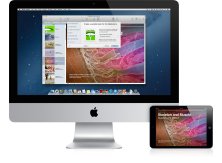
eBook Authoring
Module 1: Platforms
When you consider publishing an eBook, you need to think about platforms, because not all eBooks work on all platforms. Even within platforms there are differences you need to consider when deciding how to format and publish your eBook. There are four basic kinds of eBooks, namely, (1) Kindle eBooks that work on Amazon Kindle devices and also play via the Kindle app on Windows, iOS, Mac, and Android devices; (2) Apple compliant EPUB books that play on the iPad, the iPhone, and the Macintosh; (3) IDPF compliant EPUB books that theoretically can play on any EPUB reader; and (4) PDF books that are platform independent.
- Kindle eBooks. Amazon invented the Kindle eBook reader and also created an app enabling Kindle eBooks to play on Windows, iOS, Mac, and Android devices. When you publish an eBook via Kindle Direct Publishing, Amazon packages the book in its proprietary Kindle book format.
- Apple-compliant EPUB. If you want to write an eBook that you can publish in the Apple Book Store for delivery on the iPhone and the iPad as well as on the Mac, you need to author the book as an Apple-compliant EPUB. To facilitate authoring books in this format, Apple added to the Pages word processing program an EPUB export option.
- IDPF-compliant EPUB. The International Digital Publishing Forum (IDPF) created the EPUB standard. The latest EPUB 3 version includes new features such as pop-up footnotes, sidebars, and HTML5 audio and video. EPUB makes it possible to design electronic books in which the content is fluid. This fluid content flows onscreen and adjusts to the size of the user's device. On a large screen, for example, more text fits on the page than on a small screen. On January 30, 2017 IDPF combined with W3C and the EPUB standard is now coordinated by www.w3.org/publishing. Further development of the EPUB standard is happening in the W3C's EPUB3 Community Group. EPUB 3.3, for example, adds an option for creating fixed format eBooks. Apple Pages uses this format for its fixed format eBook option called landscape page layout. This fixed format raises accessibility concerns because users with special needs cannot reflow the text when it is not fluid. You should think about users with special needs if you author an eBook with Apple Pages, where you will need to choose whether to develop your book as a portrait-oriented flowing eBook or a landscape-oriented fixed page layout.
- PDF. The Portable Document Format (PDF) is an electronic publishing format supported on virtually every device. The Apple Book Store, however, does not support the publishing of books in PDF format. You can manually add PDFs to your Apple Books library and read them with the Apple Books app on your iOS device, but you cannot distribute PDFs in the Apple Book Store.

